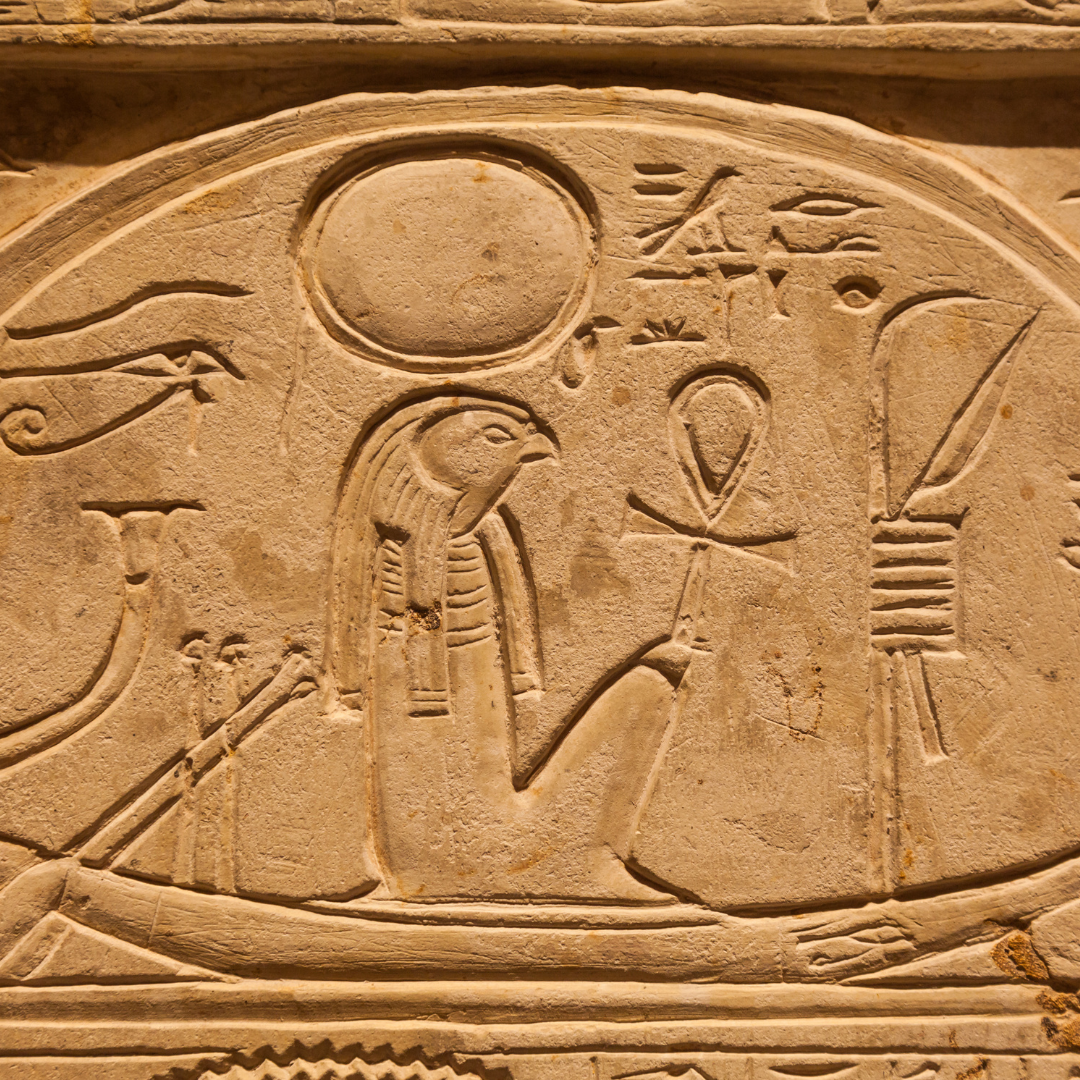

Welcome to The Real History. A blog where I talk about the real historical inspirations for my YA fantasy debut “Treasures of Egypt.”

Seqenenra Tao—The Martyr King
Few kings were able to leave their mark on history not because of their victory but due to taking the first step toward liberation. King Seqenenra is one of these rulers, the man who started the liberation war that ultimately freed Egypt from foreign rule. Today, we will meet the real king and learn about his depiction in the YA fantasy novel, Treasures of Egypt: The Spear & the Scythe.

Astarte — Goddess of Love & War
Love and war might seem like conflicting concepts to us mere mortals. But not to the Canaanite goddess, Astarte. Today we explore her historical roots and the depiction of her fictional counterpart in the YA fantasy novel, Treasures of Egypt: The Spear & the Scythe.

The Book of Gates: Sailing the Heavens
Imagine going on a mystical journey that transcends the boundaries of life and death. This is the essence of The Book of Gates, an ancient Egyptian text that serves as a cosmic map for souls navigating the afterlife. Today we will examine this journey and see how it has influenced the YA fantasy novel, Treasures of Egypt: the Spear & the Scythe.

Maat — The Goddess of Justice
In ancient Egypt, the concept of Maat stood at the very heart of society's beliefs and practices. Maat embodied the foundational principles of order, truth, and justice that ancient Egyptians held dear. They saw it as the cosmic force that ensured the universe operated harmoniously, from the predictable change of seasons to the reliable patterns of the stars. Today we discuss the goddess Maat who personified the cosmic concept of order and how she was depicted in the YA fantasy novel, Treasures of Egypt: the Spear & the Scythe.

Sobekneferu — The Woman Who Was King
Sobekneferu was the first woman in Egyptian history we know, without any doubt, ruled alone as the king. Her reign, though brief, marked the last hurrah of the Middle Kingdom before the start of what will be known as the second intermediate period and the beginning of Egypt’s division into two countries.
Sobekneferu, whose name is a tribute to the crocodile god Sobek and roughly translates as “the beauty of Sobek,” was the daughter of Amenemhat III, a ruler known for his architectural projects and the prosperity of his reign.
Today, we will meet a woman who witnessed Egypt both at its strongest and its weakest and learn about her depiction in the YA fantasy novel, Treasures of Egypt: the Spear & the Scythe.

The Hyksos — Rulers of Foreign Lands
In the long history of Egypt, an intriguing chapter unfolded with the arrival of the Hyksos on the political scene as the new rulers of Egypt. This group, whose name translates to "rulers of foreign lands," left a lasting impact on Egypt that is still felt more than three thousand years after their fall. Today we will discuss the arrival of these mysterious people, their ascent to dominance, their fall, and how they are depicted in the YA fantasy novel, Treasures of Egypt: the Spear & the Scythe.

Society and Religion — In Pharaoh We Trust
The Egyptian New Kingdom stands as a monumental era, marking Egypt's ascent to the pinnacle of ancient civilization. This period, spanning from around 1550 BC to 1070 BC, was characterized by the reigns of illustrious Pharaohs such as Hatshepsut, Thutmose III, Amenhotep III, and Ramses II, who propelled Egypt into the annals of history with their remarkable achievements. Yet, the essence of this era transcends the magnificence of its rulers, extending into the fabric of daily life and the profound spirituality that defined the epoch. Today we delve into the intricate mechanism of society and religion during the New Kingdom, shedding light on the lives of its people and their devout faith in an attempt to understand the Real History behind the society of Egyptians in the YA fantasy Novel, Treasures of Egypt: the Spear & the Scythe.

Horus vs. Set: The War of the Gods
The battle between Horus and Set is the concluding conflict of a multigenerational saga that’s rich with rivalry, cunning, and a quest for justice. But it isn’t simply the tale of godly combat but rather the essence of what these deities symbolized and the profound impact their conflict had on the cultural fabric of ancient Egyptian society, offering us a window into the ancient Egyptians' worldview, their values, and the cosmic balance they sought to maintain through their myths and deities. Today, we’ll discuss this epic tale and how it was depicted in the YA fantasy novel, Treasures of Egypt: The Spear & the Scythe.

King Snefru: Reaching for the Stars
Today let’s revisit a time when the majestic pyramids touched the skies and learn more about the real history behind a king who makes a brief appearance in the YA fantasy novel, Treasures of Egypt: The Spear & the Scythe. King Snefru was a ruler whose legacy is as towering as the monuments he built. But he wasn't just a king; he was a visionary, a trailblazer, and an innovator, whose aspirations soared as high as the stars.

Horus: The Immortal King of Egypt
Known as the Immortal King of Egypt, Horus holds a special place in the hearts and minds of those who study and admire ancient Egyptian culture and mythology. In this blog post, we'll explore who Horus is, his significance in Egyptian mythology, his family ties, the symbols and temples associated with him, and finally his appearance in the YA fantasy novel, Treasures of Egypt: the Spear & the Scythe.

Money in Ancient Egypt—A Pyramid Scheme
The New Kingdom era of Egypt, spanning from around 1550 to 1069 BC, marked a fascinating period in the ancient world, particularly in terms of its economy and monetary system. This era, covering the 18th to 20th dynasties, is renowned for its prosperity, architectural marvels, and significant developments in the economic structure of the society. Today we will explore the concept of money in the New Kingdom and how it manifests itself in the fictional world of the YA fantasy novel, Treasures of Egypt.

Isis and Osiris—The Divine Power Couple
The tale of Isis and Osiris in Egyptian mythology is a story of love, betrayal, and triumph. Today we discover an epic that was the cornerstone of ancient Egyptian mythology, offering a glimpse at the mythology behind the fiction in the YA fantasy novel, Treasures of Egypt.

King Khufu—The Great Builder
King Khufu, also known as Cheops, is a name that resonates through the annals of Egyptian history. His legacy as a pharaoh is intertwined with the Great Pyramid of Giza, one of the Seven Wonders of the Ancient World. Today we delve into the life, reign, and enduring legacy of King Khufu, providing a glimpse into the world of one of Egypt’s most iconic rulers.

Isis—The Great Lady of All
Isis, a name that echoes through the sands of time, belongs to an Egyptian goddess who’s captured the hearts and minds of people for thousands of years. She wasn't just any goddess but a symbol of many things—a beloved queen, a loving mother, a capable healer, a mourning wife, and a magician with unimaginable power.

Clothes In the New Kingdom—Ancient Styles
The New Kingdom era of ancient Egypt, a period from about 1570 to 1070 BCE, was a time of great wealth and power, and this opulence was reflected in the clothing of the Egyptians. This blog post will delve into the fascinating world of clothing in the New Kingdom, exploring the styles worn by different social classes, the fabrics used, and the colors that were popular during this period.

The Egyptian Ennead—A Divine Family
The Ennead, a powerful group of nine ancient Egyptian gods, significantly influenced Egypt’s religious landscape. This blog post explores the history, significance, and enduring impact of the Ennead, exploring how the mythological Ennead has inspired its fictional counterpart in the YA fantasy novel, Treasures of Egypt.

King Narmer—The First Nesut-Bity
Today we meet King Narmer, a pivotal figure in ancient Egyptian history, who lived around 3150 BCE, and the inspiration for one of the most fun characters in the YA fantasy novel, Treasures of Egypt. He is celebrated as the first ruler to unify Egypt, marking the beginning of Egypt as a unified nation-state. Yet, Narmer's story is also entwined with another ruler, Menes, who is sometimes considered distinct from Narmer and at other times believed to be the same person. This duality of identity makes Narmer's early life and the exact process of unification subjects of considerable debate among Egyptologists.

The Egyptian Sun—Ra, King of the Gods
In the rich world of ancient Egyptian mythology, no deity shines as brightly as Ra, the sun god. Literally. Revered as the king of the gods, Ra's influence pervades every aspect of Egyptian culture and religion. This blog post delves into the fascinating world of Ra, exploring his symbolism, mythology, and the profound impact he had on ancient Egypt and how he inspired his fictional counterpart in the YA fantasy novel, Treasures of Egypt.

The Egyptians—The People of The Two Lands
The ancient Egyptians, known for their remarkable civilization in northeastern Africa, present a fascinating study of a society that thrived for millennia. This blog post delves into the origins of the Egyptian people, offering a glimpse into their lives, culture, and the driving forces behind one of history's most enduring civilizations. So, let us meet one of the three factions of my YA fantasy novel, Treasures of Egypt.

The Egyptian Duat—Realm of the Gods and the Dead
The Duat, in ancient Egyptian mythology, is a fascinating and intricate concept that transcends the simple idea of an underworld. It was the realm where the dead journeyed, but it was more than just a final destination; it was part of a complex belief system surrounding death, the afterlife, and the cosmic order. Today, we will discover the real history behind the setting of my YA fantasy novel, Treasures of Egypt.
